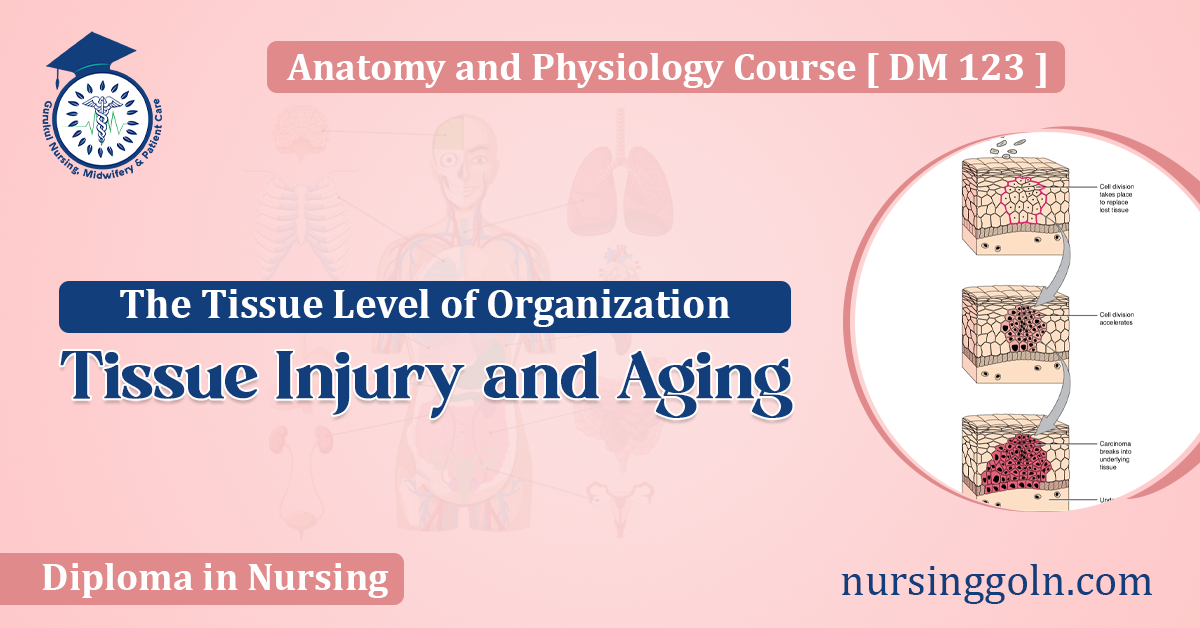Tissue, the fabric of life, forms the core building blocks of the human body. These microscopic structures play a pivotal role in the functioning of our organs, and their health significantly determines our overall well-being. One of the most significant factors that affect tissue health is aging, but it’s equally important to consider how injuries can impact tissue, potentially accelerating the aging process at the cellular and tissue levels.
Tissue Injury and Aging

Understanding Tissue: The Basics
Before delving into the intricate relationship between tissue injury and aging, let’s first understand what tissue is. Tissues are groups of similar cells that work together to perform a specific function. These are classified into four primary types:
- Epithelial tissue: Covers body surfaces, lines hollow organs, and forms glands.
- Connective tissue: Protects, binds together, and supports organs.
- Muscle tissue: Allows for movement through its contraction ability.
- Nervous tissue: Receives stimuli and conducts electrical impulses.
The coordinated effort between these tissues ensures the body functions efficiently. But as we age, or due to injuries, the efficiency and regenerative abilities of these tissues can decrease, leading to various health problems.

The Aging Process at the Tissue Level
Aging is a multifactorial process that affects all levels of biological organization, from molecules to organs. At the tissue level, several changes occur, including:
- Decrease in cell proliferation: The ability of tissues to regenerate diminishes as the rate of cell division decreases.
- Accumulation of senescent cells: These are cells that have lost their ability to divide and function but haven’t died. They can release inflammatory substances, potentially damaging surrounding tissues.
- Decline in tissue elasticity: Particularly evident in the skin, lungs, and arterial walls, leading to wrinkles, reduced lung function, and increased blood pressure, respectively.
- Reduced nutrient supply: Diminished blood flow to tissues affects nutrient and oxygen supply, impacting cellular functions.

Tissue Injury and its Implications
Tissue injury can arise from various sources, such as trauma, radiation, inflammation, or toxins. When tissues are injured, a series of processes are initiated to repair the damage. This includes inflammation, cell proliferation, and tissue remodeling.
However, if the injury is severe or repeated, it can lead to:
- Chronic inflammation: Prolonged inflammation can cause tissue damage and has been linked to many age-related diseases like arthritis, Alzheimer’s, and atherosclerosis.
- Scarring: The body may replace damaged tissue with fibrous tissue, leading to loss of function, as seen in organs like the liver after chronic alcohol abuse.
- Accelerated aging: Repeated tissue damage and the body’s efforts to repair it can accelerate the natural aging process of tissues.

The Interplay Between Tissue Injury and Aging
The intersection between tissue injury and aging is a complex dance. Here’s how they can potentially exacerbate each other:
- Compromised repair mechanisms: As we age, the body’s ability to repair tissue damage diminishes. Thus, any injury in older individuals might take longer to heal and may not restore the tissue to its original state.
- Enhanced susceptibility to injury: Aging tissues, due to decreased elasticity and strength, are more susceptible to injury. For instance, older skin is more prone to bruising and tearing.
- Chronic injuries accelerating aging: Persistent tissue injuries can trigger cellular processes that accelerate aging. For instance, chronic inflammation, a response to injury, can hasten the aging process.
- Accumulation of waste: Both aging and tissue injuries can lead to an accumulation of waste products at the cellular level. This can interfere with cellular functions and exacerbate aging.

Approaches to Counteract the Effects of Aging and Tissue Injury
Understanding the intricate relationship between tissue injury and aging paves the way for strategies to mitigate their combined effects. Some strategies include:
- Anti-inflammatory agents: Reducing inflammation can potentially slow down aging and improve tissue repair. Natural compounds like curcumin and resveratrol, as well as certain medications, can help.
- Stem cell therapy: Using stem cells to replace damaged or aged tissues is a promising avenue. It might restore tissue function and slow aging.
- Enhanced nutrition: Providing tissues with essential nutrients can boost their resilience against injuries and counteract some aging effects. Omega-3 fatty acids, antioxidants, and vitamins are particularly important.
- Physical therapy: Especially for musculoskeletal injuries, physical therapy can restore function, reduce scar tissue formation, and improve overall tissue health.

The tissue level of organization provides an essential framework to understand the complexities of the human body. Aging, a natural and inevitable process, brings with it changes that can compromise tissue integrity and function. When compounded with injuries, the effects can be even more pronounced, potentially accelerating the aging process.
However, with a deeper understanding of these processes and advancements in medical science, there’s hope. Through proactive interventions, we can potentially delay the effects of aging and enhance tissue repair mechanisms, ensuring better health and quality of life even in our twilight years.
See more:
